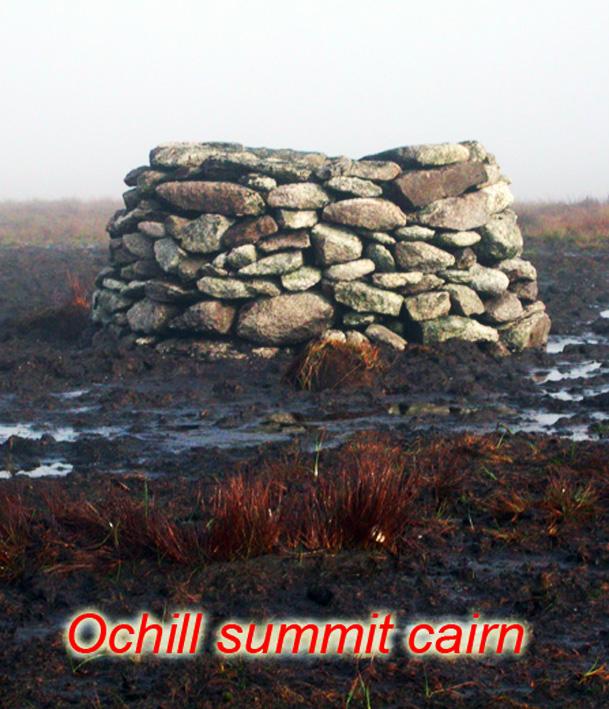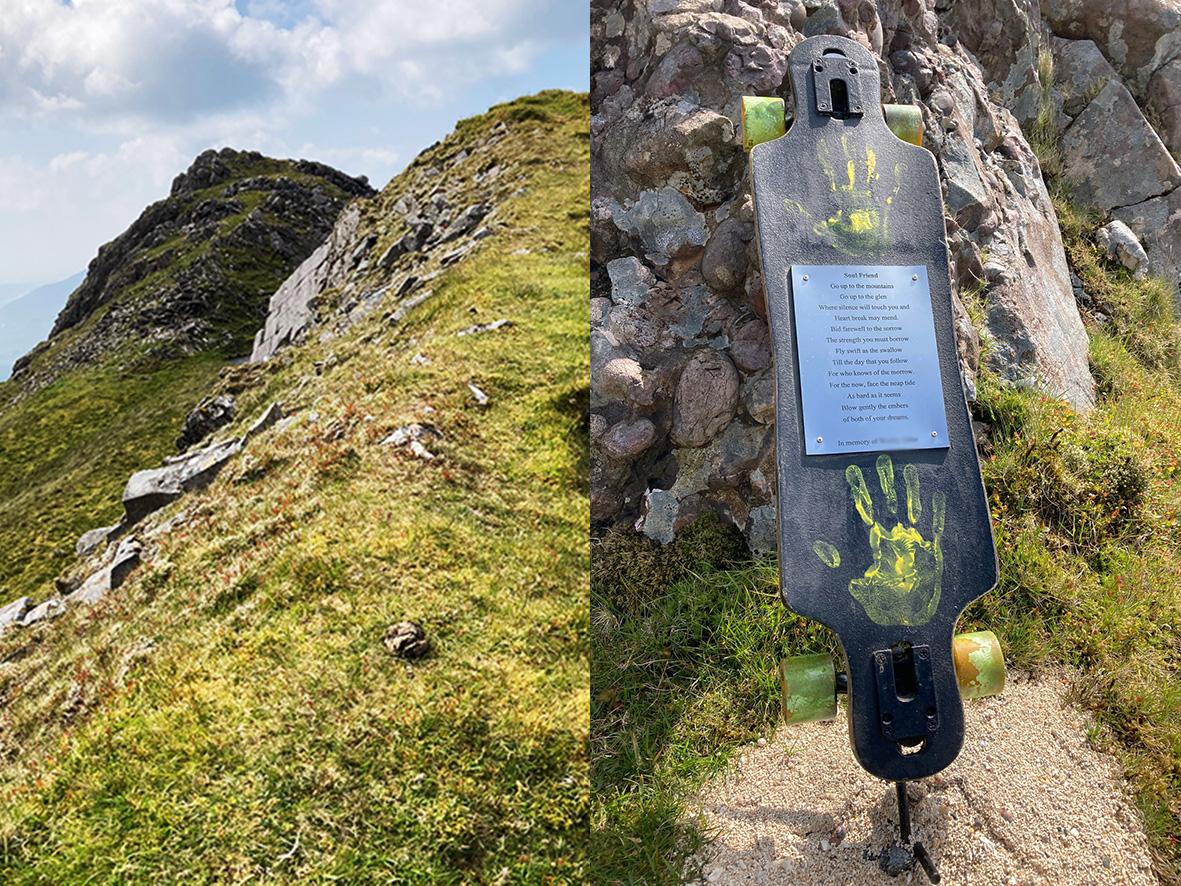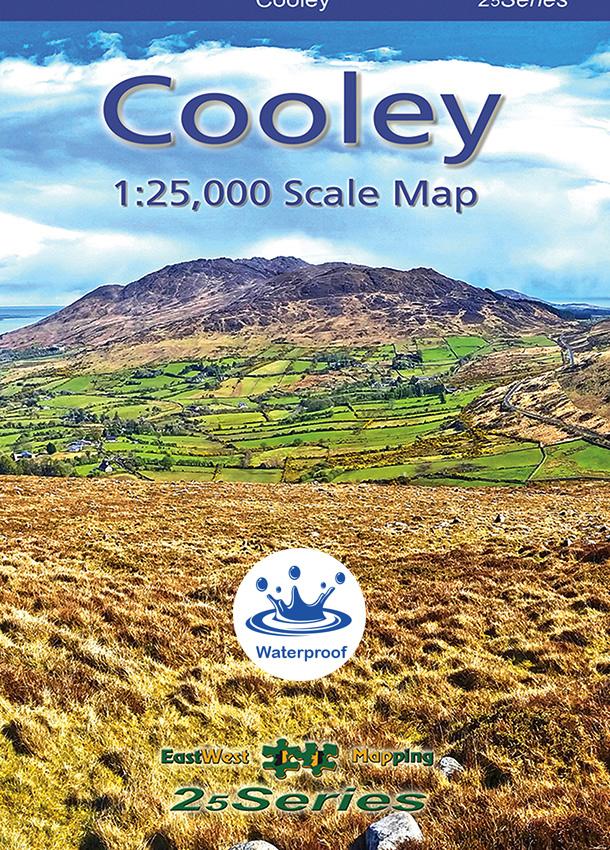Ochill
Silsean or Shileshawn is subject of another post, a name which I believe is listed incorrectly on OSI Sheet 56 for the SW summit of Moanvayn. The name Moanvayn seems to apply to the whole bulk of the hill and is well known locally on all sides of the mountain.
The SW summit of Moanvayn has a large round stone cairn guarded by deep marsh (who constructed this cairn?) and if we want to assign a name to this height, the best candidate is Ochill.
I wouldn’t like to suggest that the name Ochill is in widespread local use for the summit but I found it refers to the upper part of this end of the hill. Myles Clarke who has farmed in Togher all his life says his father used that name and it’s also known in the Ballyknockan area.
The name Ochill is found on the Ordnance Survey maps as Oghill and it’s pronounced like ‘oakhill’ except that the ‘oak’ has a more guttural ‘ch’ sound and the ‘h’ in ‘hill’ is nearly silent. Price or www.logainm.ie suggest ‘eochaill’, a place of yew trees as a meaning. Yew trees will grow in a variety of soils but they do not like this sort of high wet moorland – it’s not their habitat. The local farmers point to the high ground and say this is Ochill, it seems very unlikely that either yew or oak would have grown at this height. Of course, the climate changes but has it changed that much in the several hundred years??
Garryochill or okill lies just above Ballyknockan, below the head ditch – this is the ‘garden of Ochill’, referring not literally to a garden but rather to an area of better grazing for sheep etc.
If Ochill here doesn’t refer to yew trees, what does it come from? I don’t know but like Garbh Bheinn I note another Scottish echo – there are hills called the Ochills in southern Scotland and here the word has Welsh and Cumbric origins, meaning ‘an upland’. Could the word have had a similar meaning here once – just simply ‘the upland’??




